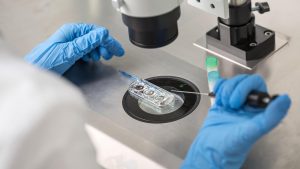Endometriosis is a complex and incapacitating disease that effects one in ten women around the world. It’s a common illness, yet obtaining a diagnosis is difficult, sometimes taking as long as 11 years to make a diagnosis.
The many reasons why it takes such a long time to diagnose the disease vary. Often it’s not discussed because patients are sometimes too embarrassed to discuss the symptoms with their doctor, while other times patients may feel that the pain and discomfort they are experiencing is completely normal.
Other times, the symptoms of endometriosis can be mistaken for another disorder altogether. Sometimes the pain and discomfort aren’t taken as seriously as they should be among medical staff and unfortunately there is no screening process to make the process easier.
Currently the easiest way to diagnose endometriosis is through laparoscopic surgery, a procedure that requires anaesthetic.
However recently, scientists at the Feinstein Institute for Medical Research in New York conducted research into developing a method to help detect and diagnose endometriosis, sometimes before symptoms even begin to start.
The research aims at being able to diagnose endometriosis by analysing menstrual blood, looking at the stromal cells found in connective tissue, which can be very aggressive in patients suffering from the disease.
There is currently no cure for endometriosis, however symptoms can be managed effectively, and the earlier the diagnosis, the earlier the treatment.
If endometriosis is treated during the early stages, patients can prevent the disease from spreading to other organs, while increasing the chance of a natural pregnancy. Avoiding years of excruciating and debilitating pain can help to improve the quality of life for women who suffer from the disease.






